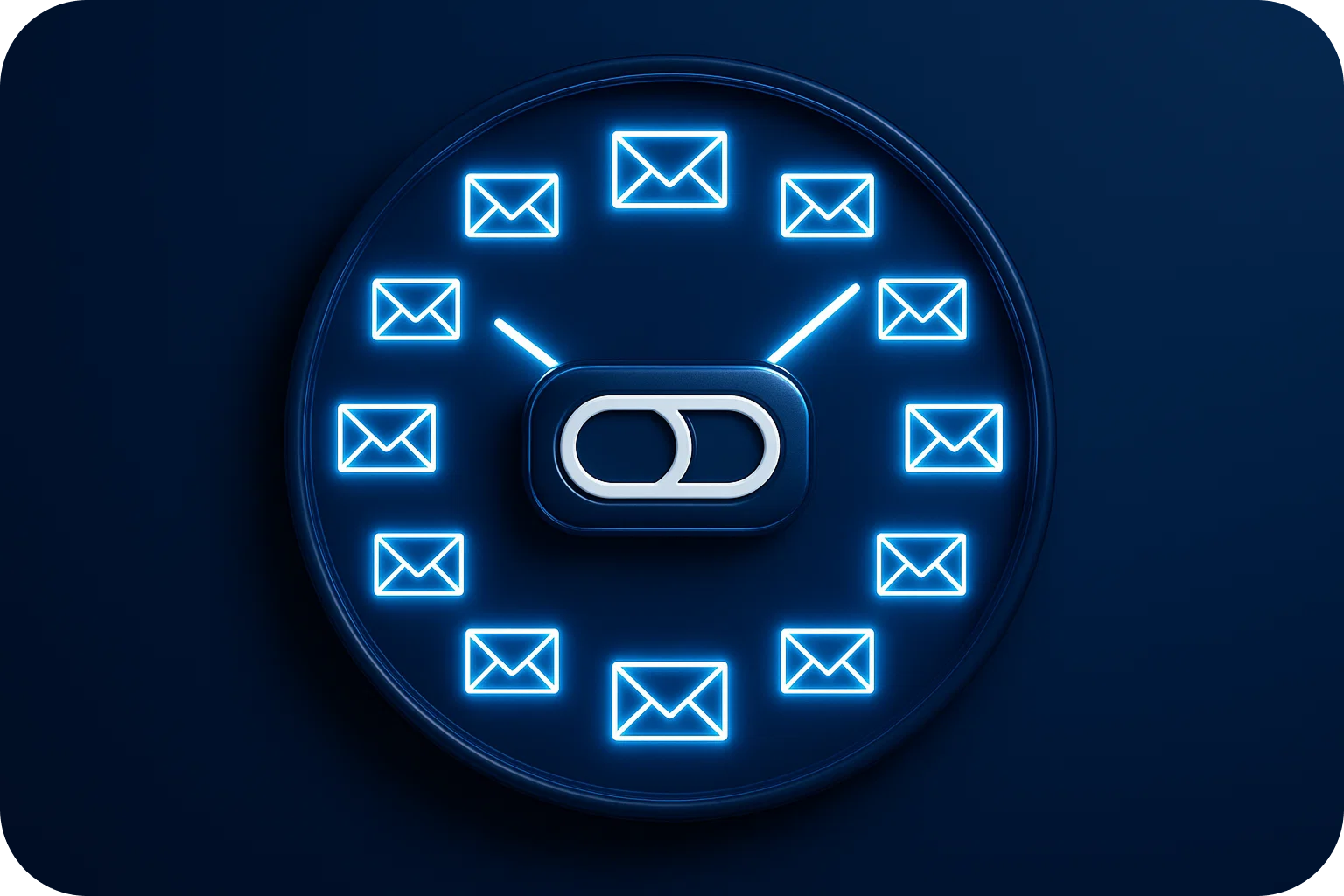The Cold Email Recession Playbook: Outreach Strategies When Budgets Freeze

When economic uncertainty hits and marketing budgets get slashed, sales teams face a critical challenge: how do you maintain pipeline growth without the resources you're used to? The answer lies in cold email, one of the most cost-effective sales tactics available today.
While competitors retreat and reduce outreach efforts, smart companies double down on cold email strategy to capture market share. Here's your complete playbook for thriving during budget freezes.
Why Cold Email Becomes Essential During Downturns
Economic recessions force businesses to scrutinize every dollar spent. Paid advertising budgets evaporate, event sponsorships disappear, and expensive ABM platforms get cut. But cold email remains standing because the math is undeniable.
Consider the cost comparison: a single trade show booth can run $15,000-$50,000, while a comprehensive cold email infrastructure costs a fraction of that, often under $500 monthly for significant volume. The ROI difference becomes impossible to ignore when CFOs demand justification for every expense.
During downturns, decision-makers become more receptive to solutions that reduce costs or increase efficiency. Your cold email outreach directly addresses their primary concern, making your timing perfect if you position your message correctly.
Recession-Proof Cold Email Strategy Fundamentals
Scale Without Proportional Cost Increases
Traditional sales tactics require linear investment: more SDRs mean more salaries, more ads mean more ad spend. Cold email breaks this model. With proper infrastructure, you can scale from 1,000 to 50,000 emails monthly without proportionally increasing costs.
The key is infrastructure that supports volume without sacrificing deliverability. Many companies make the mistake of using their primary domain and a handful of inboxes, quickly hitting sending limits and damaging sender reputation. Instead, implement a multi-domain, multi-inbox strategy that distributes volume across dedicated cold email infrastructure.
Maintain Deliverability at Scale
Deliverability becomes your competitive advantage during recessions. While competitors cut corners and damage their sender reputation, maintaining 96-98% inbox placement rates ensures your message reaches decision-makers when they're most receptive to cost-saving solutions.
Proper email warm-up takes 3-4 weeks but pays dividends throughout your campaign. Start new domains and inboxes early, gradually increasing sending volume while monitoring engagement metrics. This patience prevents the deliverability disasters that plague rushed campaigns.
Technical setup matters more than most teams realize. SPF, DKIM, and DMARC records must be configured correctly across all sending domains. DNS configuration errors are the silent killer of cold email campaigns, causing messages to land in spam folders regardless of content quality.
Optimizing Your Message for Budget-Conscious Buyers
Lead With Cost Savings and Efficiency
During economic uncertainty, every email should answer one question: "How does this help me do more with less?" Restructure your value proposition around efficiency gains, cost reductions, and resource optimization.
Replace feature-focused messaging with outcome-focused benefits. Instead of "Our platform includes advanced automation," try "Reduce manual work by 15 hours weekly while maintaining output." Quantify the financial impact whenever possible.
Shorten Your Sales Cycle
Budget freezes create urgency around approved expenditures. Decision-makers know that the available budget may disappear in the next quarter, making them more decisive about solutions that clearly demonstrate ROI.
Adjust your cold email strategy to reflect this urgency. Offer condensed evaluation periods, streamlined onboarding, and faster time-to-value. Your email sequence should move prospects from awareness to decision in weeks, not months.
Address Budget Objections Proactively
The "we don't have a budget" objection becomes universal during downturns. Address it before prospects raise it by positioning your solution as a budget-preservation tool rather than an additional expense.
Frame your offering as replacing more expensive alternatives or preventing costly problems. If your solution costs $5,000 annually but replaces a $20,000 tool or prevents a $50,000 problem, lead with that comparison in your cold email outreach.
Tactical Execution: What Actually Works
Volume Strategy for Consistent Pipeline
Consistency matters more during recessions because conversion rates may temporarily decline as prospects become more cautious. Compensate by increasing outreach volume while maintaining personalization quality.
Implement a sustainable sending schedule: 20 emails per inbox daily across multiple inboxes and domains. This approach allows you to reach 1,000-5,000 prospects weekly without triggering spam filters or burning out your team.
Segmentation and Targeting Precision
Budget constraints make poor targeting expensive. Every wasted email represents lost opportunity cost. Refine your ideal customer profile to focus on companies and roles most likely to have budget authority and immediate need.
Prioritize segments showing recession-resistant characteristics: companies in essential industries, businesses with recent funding, or organizations in growth mode despite economic headwinds. These prospects have a budget and motivation to invest in sales tools that drive revenue.
Follow-Up Sequences That Convert
Most cold email campaigns fail because they give up too early. During recessions, decision cycles lengthen as approvals require additional stakeholders. Your follow-up sequence must account for this reality.
Implement 6-8 touchpoint sequences spread over 3-4 weeks. Each email should provide new value—share relevant case studies, industry insights, or specific cost-saving calculations. Persistence with value differentiates professional outreach from spam.
Infrastructure That Scales With Your Ambition
The Technical Foundation
Your cold email strategy is only as strong as the infrastructure supporting it. Attempting high-volume outreach from a single domain with limited inboxes guarantees deliverability problems and campaign failure.
Successful recession-era outreach requires dedicated infrastructure: multiple domains (3-5 per major campaign), multiple inboxes per domain (3-5 recommended), and proper email provider selection. Google Workspace and Microsoft 365 offer better deliverability than generic hosting providers.
Automation Without Losing Personalization
Sales tools that automate repetitive tasks while preserving personalization become essential when teams face pressure to do more with less. The right technology stack allows one SDR to manage outreach that previously required three.
Integration capabilities matter significantly. Your cold email infrastructure should connect seamlessly with your CRM, outreach platforms, and analytics tools. Manual data entry wastes time and introduces errors that damage campaign performance.
Monitoring and Optimization
Track metrics that matter: inbox placement rate, reply rate, meeting booking rate, and cost per qualified lead. During budget freezes, demonstrating ROI becomes critical for maintaining resources and justifying expansion.
Implement weekly performance reviews. Small optimizations compound over time—a 2% improvement in reply rate across 5,000 emails monthly generates 100 additional conversations annually. These marginal gains separate thriving teams from struggling ones.
Turning Economic Pressure Into Competitive Advantage
Recessions reveal which companies have sustainable sales tactics and which relied on expensive shortcuts. Cold email outreach, executed properly, provides consistent pipeline generation regardless of economic conditions.
While competitors reduce activity and cede market share, your team can maintain or increase outreach volume. This counter-cyclical approach captures attention from prospects who see fewer alternatives, improving response rates and conversion metrics.
The infrastructure you build during challenging times becomes your competitive moat during recovery. Teams that master high-volume, high-deliverability cold email during recessions enter growth periods with proven systems that scale effortlessly.
Implementation Roadmap
Start by auditing your current cold email infrastructure. Calculate your maximum sustainable sending volume given current domains and inboxes. If the answer is less than 1,000 emails weekly, infrastructure limitations are constraining your pipeline.
Invest in proper setup before scaling volume. The 10 minutes required for comprehensive implementation saves weeks of deliverability troubleshooting later. Configure DNS records correctly, warm up new inboxes properly, and test deliverability before launching campaigns.
Build your outreach sequences with recession-appropriate messaging. Review every email in your current campaigns and revise language to emphasize cost savings, efficiency, and ROI. Remove feature lists and replace them with outcome-focused benefits.
The Path Forward
Economic downturns don't eliminate the need for new customers; they intensify it. Companies still need to grow, and decision-makers still respond to compelling outreach that addresses their current challenges.
Your cold email strategy during budget freezes should be more aggressive, not less. The infrastructure investment required is minimal compared to alternatives, the ROI is measurable and defensible, and the competitive advantage compounds as others retreat.
The question isn't whether cold email works during recessions; it's whether your infrastructure can support the volume and deliverability required to capitalize on the opportunity. Build that foundation now, and your pipeline will remain full regardless of economic conditions.
More articles
Get started now




%201.png)



.png)

